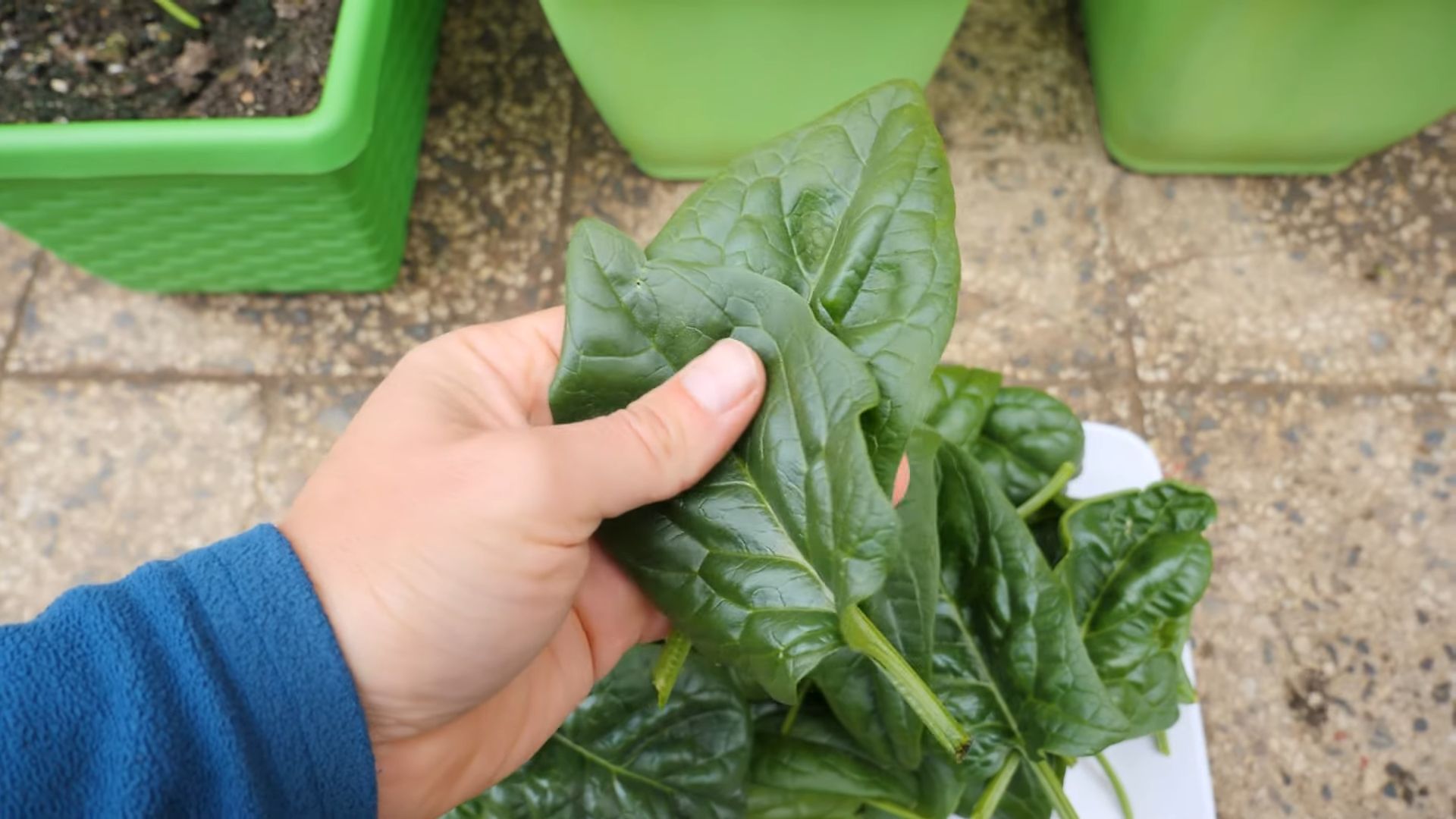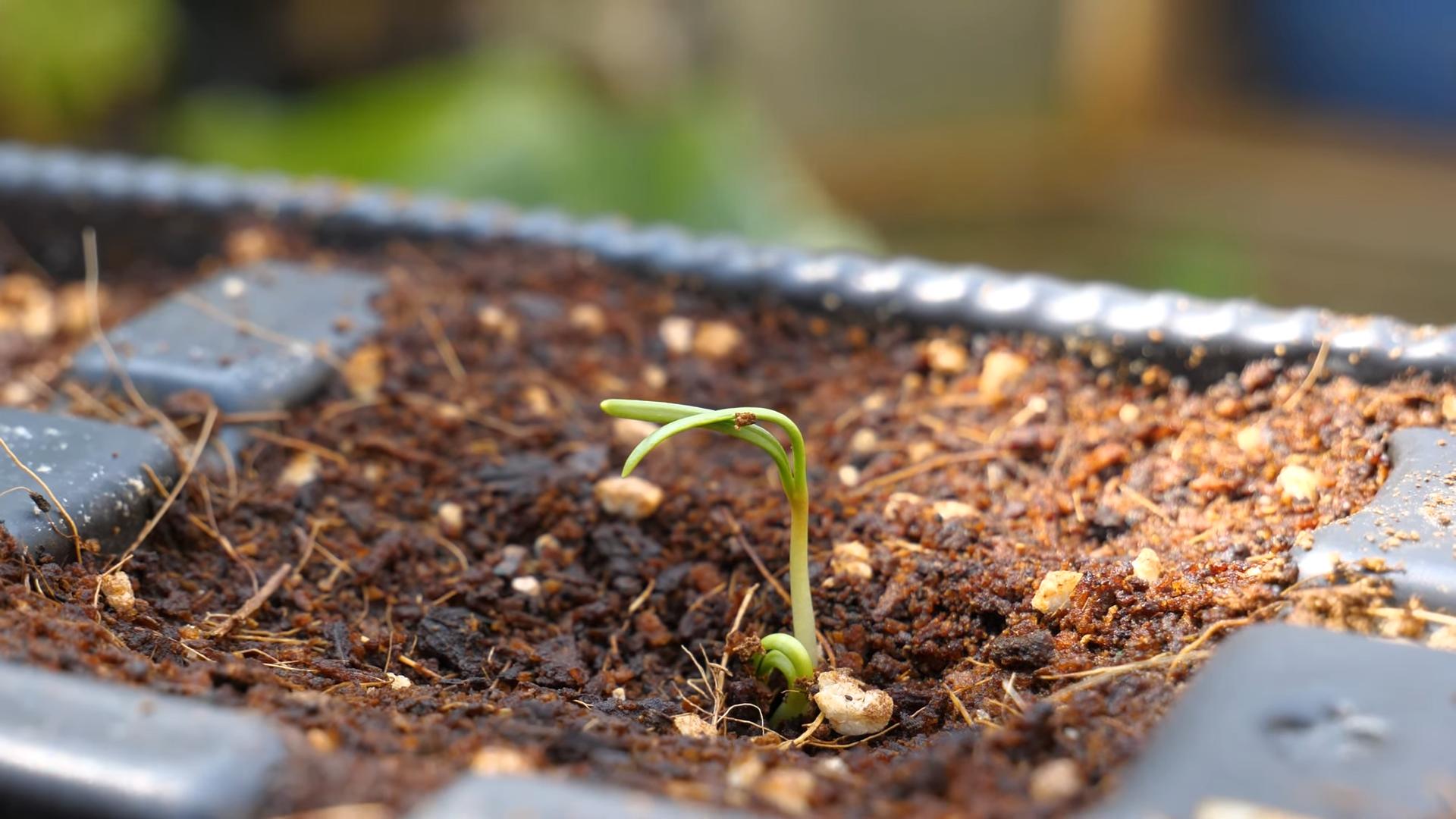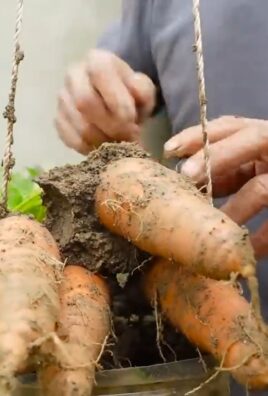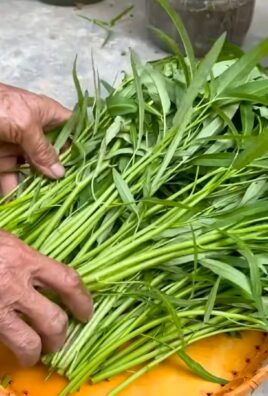Grow Spinach in Pots – and unlock the secrets to fresh, vibrant greens right outside your door! Imagine stepping onto your balcony or into your garden and harvesting crisp, delicious spinach whenever you crave it. No more trips to the grocery store for wilted, overpriced leaves! This isn’t just about convenience; it’s about connecting with nature and enjoying the satisfaction of nurturing your own food.
For centuries, cultivating spinach has been a cornerstone of healthy diets across various cultures. Originating in ancient Persia, spinach quickly spread its leafy goodness throughout the world, becoming a staple in cuisines from Europe to Asia. Now, you can participate in this rich history, even with limited space.
Many people shy away from gardening, thinking it requires acres of land and expert knowledge. But that’s simply not true! Growing spinach in pots is surprisingly easy and rewarding, even for beginners. I’m here to show you simple, effective DIY tricks and hacks that will transform your patio, balcony, or even a sunny windowsill into a thriving spinach haven. This guide will equip you with the knowledge to overcome common challenges, maximize your yield, and enjoy a continuous supply of fresh, nutritious spinach. Let’s get started and cultivate your green thumb!

Grow Your Own Spinach Bounty in Pots: A Beginner’s Guide
Hey there, fellow gardening enthusiasts! I’m so excited to share my secrets to growing lush, vibrant spinach right in your own pots. Forget those sad, wilted bags from the grocery store – fresh, homegrown spinach is incredibly rewarding, and surprisingly easy to cultivate, even if you’re short on space. Let’s dive in!
Choosing the Right Pot and Location
Before we get our hands dirty, let’s talk about setting the stage for success. The right pot and location are crucial for happy spinach plants.
* Pot Size: Spinach needs room for its roots to spread. I recommend a pot that’s at least 6-8 inches deep and wide. A 12-inch pot is even better, especially if you plan on growing multiple plants together.
* Drainage: This is non-negotiable! Make sure your pot has drainage holes. Spinach hates soggy roots, which can lead to rot and other problems.
* Material: Clay, plastic, or even fabric pots will work. I personally love fabric pots because they allow for excellent drainage and aeration.
* Sunlight: Spinach thrives in cool weather and needs about 3-6 hours of sunlight per day. In hotter climates, aim for morning sun and afternoon shade to prevent bolting (going to seed prematurely).
* Location, Location, Location: Choose a spot that’s easily accessible for watering and harvesting. A patio, balcony, or even a sunny windowsill can work wonders.
Preparing the Soil: The Foundation for Success
Spinach is a bit of a soil snob, but don’t worry, it’s not too demanding. A well-draining, nutrient-rich soil is key.
* The Perfect Mix: I like to use a mix of equal parts potting soil, compost, and perlite or vermiculite.
* Potting Soil: Provides a good base for drainage and aeration.
* Compost: Adds essential nutrients and improves soil structure.
* Perlite/Vermiculite: Enhances drainage and aeration, preventing the soil from becoming compacted.
* pH Level: Spinach prefers a slightly acidic to neutral pH (around 6.5 to 7.0). You can test your soil’s pH with a simple soil testing kit from your local garden center.
* Avoid Garden Soil: Resist the urge to use garden soil in your pots. It’s often too heavy and doesn’t drain well, which can suffocate your spinach roots.
Planting Your Spinach Seeds: From Tiny Seeds to Leafy Greens
Now for the fun part – planting!
1. Sowing Seeds: Fill your pot with the prepared soil mix, leaving about an inch of space at the top. Moisten the soil thoroughly.
2. Spacing: Sow the spinach seeds about ½ inch deep and 1 inch apart. If you’re using a larger pot, you can space them a bit further apart (2-3 inches).
3. Covering: Gently cover the seeds with soil and lightly pat it down.
4. Watering: Water gently to avoid disturbing the seeds. A spray bottle works well for this.
5. Germination: Keep the soil consistently moist but not soggy. Spinach seeds typically germinate in 5-10 days.
6. Thinning (If Necessary): Once the seedlings emerge, thin them out if they’re too crowded. You want to give each plant enough space to grow. Snip off the weaker seedlings at the soil line, leaving the strongest ones to thrive.
Caring for Your Spinach Plants: Nurturing Your Greens
Consistent care is essential for a bountiful spinach harvest.
1. Watering: Spinach needs consistent moisture, especially during hot weather. Water deeply whenever the top inch of soil feels dry to the touch. Avoid overwatering, as this can lead to root rot.
2. Fertilizing: Spinach is a heavy feeder, so regular fertilization is important. I like to use a liquid fertilizer diluted to half strength every 2-3 weeks. Look for a fertilizer that’s high in nitrogen, which promotes leafy growth. Fish emulsion or compost tea are excellent organic options.
3. Sunlight: Ensure your spinach plants are getting adequate sunlight. If you’re growing them indoors, you may need to supplement with grow lights.
4. Weeding: Keep your pots free of weeds, which can compete with your spinach for nutrients and water. Gently pull out any weeds as soon as you see them.
5. Pest Control: Keep an eye out for pests like aphids, slugs, and snails.
* Aphids: These tiny insects can suck the sap from your spinach leaves. You can control them with a strong spray of water or by introducing beneficial insects like ladybugs.
* Slugs and Snails: These slimy creatures can munch on your spinach leaves. You can handpick them off the plants or use slug bait.
6. Bolting Prevention: As the weather warms up, spinach is prone to bolting (going to seed). This makes the leaves bitter and less palatable. To prevent bolting, try to provide shade during the hottest part of the day and keep the soil consistently moist. You can also choose bolt-resistant spinach varieties.
Harvesting Your Spinach: Enjoying the Fruits (or Leaves!) of Your Labor
Harvesting your spinach is the most rewarding part of the process!
1. When to Harvest: You can start harvesting spinach leaves when they’re about 4-6 inches long.
2. How to Harvest: Use scissors or a sharp knife to cut the outer leaves, leaving the inner leaves to continue growing. This is known as “cut and come again” harvesting, and it allows you to enjoy a continuous supply of spinach for several weeks.
3. Harvesting the Whole Plant: If you prefer, you can also harvest the entire plant at once. Simply cut the stem at the base of the plant.
4. Timing: Harvest in the morning, when the leaves are crisp and cool.
5. Storage: Store your harvested spinach in the refrigerator in a plastic bag or container. It will stay fresh for several days.
Choosing the Right Spinach Variety
There are many different spinach varieties to choose from, each with its own unique characteristics. Here are a few of my favorites:
* Bloomsdale Long Standing: A classic variety with dark green, crinkled leaves. It’s known for its good flavor and bolt resistance.
* Giant Nobel: A fast-growing variety with large, smooth leaves. It’s a good choice for early spring or fall planting.
* Malabar Spinach: While technically not a true spinach, Malabar spinach is a heat-tolerant alternative that thrives in warm weather. It has thick, fleshy leaves that can be used in salads or cooked like spinach.
* Tyee: A hybrid variety with smooth leaves and excellent bolt resistance. It’s a good choice for growing in warmer climates.
* Red Cardinal: Adds a pop of color to your garden with its reddish-purple leaves. It has a mild flavor and is a good choice for salads.
Troubleshooting Common Spinach Problems
Even with the best care, you may encounter some problems while growing spinach. Here are a few common issues and how to address them:
* Yellowing Leaves: This can be caused by a variety of factors, including nutrient deficiencies, overwatering, or pests. Check the soil’s pH and nutrient levels, and make sure you’re not overwatering.
* Holes in Leaves: This is often caused by slugs, snails, or caterpillars. Handpick the pests off the plants or use appropriate pest control measures.
* Bolting: As mentioned earlier, bolting is when spinach goes to seed prematurely. To prevent bolting, provide shade during hot weather and keep the soil consistently moist.
* Downy Mildew: This fungal disease can cause yellow spots on the leaves. To prevent downy mildew, provide good air circulation and avoid overhead watering.
Extending Your Spinach Season
Spinach is a cool-season crop, but you can extend your growing season with a few simple tricks:
* Succession Planting: Sow new seeds every 2-3 weeks to ensure a continuous supply of spinach.
* Cold Frames or Row Covers: These can protect your spinach plants from frost and extend the growing season into the fall and winter.
* Shade Cloth: Use shade cloth to protect your spinach plants from the hot summer sun.
Enjoying Your Homegrown Spinach
Now that you’ve harvested your spinach, it’s time to enjoy it! Here are a few ideas:
* Salads: Fresh spinach is a delicious addition to salads.
* Smoothies: Add a handful of spinach to your smoothies for a boost of nutrients.
* Sautéed Spinach: Sauté spinach with garlic and olive

Conclusion
So, there you have it! Growing spinach in pots is not only achievable, but it’s also a remarkably rewarding experience. We’ve walked through the steps, from selecting the right pot and soil to nurturing your leafy greens to a bountiful harvest. But why should you bother with this DIY project?
Simply put, fresh, homegrown spinach tastes infinitely better than anything you can buy at the store. The vibrant flavor and crisp texture are unparalleled, and knowing you cultivated it yourself adds an extra layer of satisfaction to every bite. Beyond the taste, growing your own spinach allows you to control the entire process, ensuring it’s free from harmful pesticides and herbicides. You’re providing yourself and your family with a healthy, nutritious food source, right from your own balcony or patio.
Furthermore, growing spinach in pots is incredibly convenient, especially for those with limited space. Whether you have a sprawling garden or just a small apartment balcony, you can enjoy the benefits of fresh spinach. It’s also a fantastic way to introduce children to gardening and teach them about where their food comes from.
But the possibilities don’t stop there! Feel free to experiment with different varieties of spinach. Try baby spinach for tender salads, or explore heirloom varieties for unique flavors and textures. You can also companion plant your spinach with herbs like basil or mint, which can help deter pests and enhance the flavor of your greens. Consider adding a slow-release fertilizer to your potting mix for an extra boost of nutrients.
Don’t be afraid to get creative with your container gardening. Use repurposed containers like old buckets or tubs to add a rustic touch to your garden. You can even create a vertical spinach garden using stacked planters or hanging baskets, maximizing your space and adding visual interest.
The key to success with growing spinach in pots is consistent care. Regular watering, proper fertilization, and protection from extreme temperatures are essential for a healthy and productive crop. Keep an eye out for pests and diseases, and take action promptly to prevent them from spreading.
We firmly believe that anyone can successfully grow spinach in pots, regardless of their gardening experience. It’s a simple, affordable, and incredibly rewarding project that will bring fresh, healthy greens to your table.
So, what are you waiting for? Grab a pot, some soil, and some spinach seeds, and get started today! We’re confident that you’ll be amazed by the results. And once you’ve harvested your first crop, we encourage you to share your experience with us. Post photos of your spinach plants, share your tips and tricks, and let us know what you’ve learned along the way. Together, we can create a community of passionate gardeners who are dedicated to growing their own food and enjoying the many benefits of fresh, homegrown spinach. Embrace the joy of growing spinach in pots and savor the delicious rewards!
Frequently Asked Questions (FAQ)
1. What is the best size pot for growing spinach?
The ideal pot size for growing spinach is at least 6-8 inches deep and wide. This provides enough space for the roots to develop properly. However, larger pots (12 inches or more) are even better, as they retain moisture for longer and allow you to grow more plants in a single container. If you’re planning to grow multiple spinach plants in one pot, make sure to space them at least 4-6 inches apart to allow for adequate air circulation and prevent overcrowding. Overcrowding can lead to fungal diseases and reduced yields. Remember to choose a pot with drainage holes to prevent waterlogging, which can be detrimental to spinach growth.
2. What type of soil is best for growing spinach in pots?
Spinach thrives in well-draining, nutrient-rich soil with a slightly acidic to neutral pH (around 6.5 to 7.0). A good quality potting mix specifically formulated for vegetables is an excellent choice. Avoid using garden soil in pots, as it tends to compact and doesn’t drain well. You can also amend your potting mix with compost or other organic matter to improve its fertility and drainage. Adding perlite or vermiculite can further enhance drainage and aeration. A well-balanced soil provides the necessary nutrients for healthy spinach growth and prevents common problems like nutrient deficiencies.
3. How often should I water my spinach plants in pots?
Spinach needs consistent moisture to thrive, but it’s also susceptible to root rot if overwatered. Water your spinach plants when the top inch of soil feels dry to the touch. Water deeply, ensuring that the entire root ball is moistened. Avoid watering from overhead, as this can promote fungal diseases. Instead, water at the base of the plant. During hot, dry weather, you may need to water more frequently, possibly even daily. Check the soil moisture regularly and adjust your watering schedule accordingly. Mulching around the base of the plants can help retain moisture and reduce the need for frequent watering.
4. How much sunlight does spinach need?
Spinach prefers full sun (6-8 hours of direct sunlight per day), but it can also tolerate partial shade, especially in hot climates. If you live in a region with intense summer heat, providing some afternoon shade can help prevent the leaves from wilting or burning. Insufficient sunlight can result in leggy growth and reduced yields. If you’re growing spinach indoors, place it near a sunny window or use grow lights to provide adequate illumination. Rotate the pot regularly to ensure that all sides of the plant receive equal sunlight.
5. What are some common pests and diseases that affect spinach, and how can I prevent them?
Common pests that affect spinach include aphids, spider mites, and leaf miners. Regularly inspect your plants for signs of infestation, such as yellowing leaves, webbing, or small holes in the foliage. You can control aphids and spider mites with insecticidal soap or neem oil. Leaf miners can be removed by hand or controlled with row covers. Fungal diseases like downy mildew and powdery mildew can also affect spinach, especially in humid conditions. To prevent these diseases, ensure good air circulation around your plants, avoid overhead watering, and remove any infected leaves promptly. You can also use a fungicide if necessary. Practicing crop rotation and using disease-resistant varieties can further reduce the risk of pest and disease problems.
6. When is the best time to harvest spinach?
You can start harvesting spinach leaves as soon as they are large enough to eat, typically when they are 4-6 inches long. Harvest the outer leaves first, leaving the inner leaves to continue growing. This cut-and-come-again method allows you to enjoy a continuous harvest over several weeks. Avoid harvesting during the hottest part of the day, as the leaves will be more prone to wilting. Spinach is best harvested in the morning when the leaves are crisp and fresh. Wash the leaves thoroughly before eating or storing them.
7. Can I grow spinach indoors?
Yes, you can successfully grow spinach indoors, provided you provide adequate light, water, and nutrients. Choose a sunny window that receives at least 6 hours of direct sunlight per day, or use grow lights to supplement natural light. Use a well-draining potting mix and water regularly, keeping the soil consistently moist but not waterlogged. Fertilize your spinach plants with a balanced liquid fertilizer every 2-3 weeks. Monitor for pests and diseases, and take action promptly if any problems arise. With proper care, you can enjoy fresh, homegrown spinach even during the winter months.
8. How can I prevent my spinach from bolting (going to seed)?
Bolting is a natural process that occurs when spinach plants are exposed to high temperatures or long days. To prevent bolting, plant your spinach in early spring or late summer, when temperatures are cooler. Choose bolt-resistant varieties. Provide some afternoon shade during hot weather. Water regularly to keep the soil cool and moist. Harvest the leaves frequently to encourage continued vegetative growth. If your spinach plants do start to bolt, you can still harvest the leaves, but they may become bitter.
9. Can I grow spinach from seed or should I buy seedlings?
You can grow spinach from either seed or seedlings. Growing from seed is more economical, but it requires a bit more patience. Sow the seeds directly into your pots, about ½ inch deep and 1 inch apart. Keep the soil moist until the seeds germinate, which usually takes 5-10 days. Thin the seedlings to 4-6 inches apart once they have developed a few true leaves. Buying seedlings is a quicker option, but it can be more expensive. Choose healthy, vigorous seedlings with no signs of pests or diseases. Transplant the seedlings into your pots, spacing them 4-6 inches apart.
10. What are some good companion plants for spinach?
Spinach benefits from being planted alongside certain companion plants that can help deter pests, improve growth, or enhance flavor. Good companion plants for spinach include:
* **Radishes:** They deter leaf miners and break up the soil.
* **Lettuce:** They share similar growing requirements and can provide shade for each other.
* **Strawberries:** They help to suppress weeds and attract beneficial insects.
* **Marigolds:** They repel nematodes and other soil pests.
* **Garlic and Onions:** They deter aphids and other pests.
* **Chamomile:** It attracts beneficial insects and improves the flavor of spinach.
Avoid planting spinach near fennel, as it can inhibit its growth.




Leave a Comment